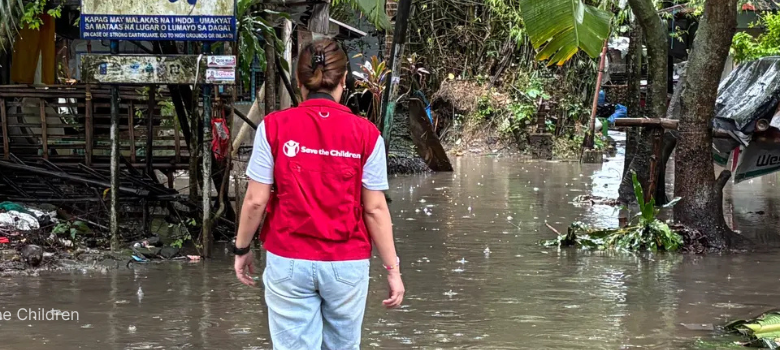Asia’s Children on the Frontline of Climate Disasters: Why Asia’s Climate Disasters Demand Immediate Action

The 2025 monsoon season is teaching us a hard lesson: the climate crisis is no longer a distant threat, it is a present emergency, and children are sadly exposed to this. Across Asia, from Pakistan’s flood plains to Nepal’s drought-stricken villages, extreme weather is killing children, destroying schools, and upending futures.
This year alone, more than 130 children have died in the floods. Thousands more have been forced from their homes, seen their classrooms turned into evacuation centers, and lost months of learning.
Asia’s Climate Reality
Asia is the world’s most disaster-prone region, and it is heating faster than the global average. Last year, 2023, was the hottest on record, and scientists warn that rising temperatures will make storms more powerful, floods more intense, droughts more severe, and heatwaves more deadly.
This year’s early and destructive monsoon has left a trail of devastation:
- Philippines: Multiple tropical cyclones destroyed 1,350 classrooms. Over 200 schools are now evacuation centers.
- China: Late July floods in Beijing displaced over 100,000 people.
- Thailand: Floods across 11 provinces affected 145,000 people, raising fears of repeat destruction to schools.
- Pakistan: Early monsoon floods in Punjab killed 133 children, damaged more than a quarter of schools, and contaminated water supplies.
- Nepal: Drought in Madhesh Province forced families to survive on emergency deliveries of 20,000 liters of drinking water.
- Bangladesh: Rivers in Feni district overflowed, turning schools into shelters. Families are surviving on hygiene kits and small cash grants.
The Education Emergency
When floods submerge classrooms or drought drives families from their villages, education is disrupted, sometimes permanently. Without school, children lose not only academic progress but also the safety, structure, and hope that classrooms provide during crises.
In too many cases, the loss of education becomes a permanent setback, trapping children in poverty and exposing them to child labor, exploitation, and early marriage.
Why Children Are Hit Hardest
Children are more vulnerable to dehydration, disease, and malnutrition after climate disasters. They are less able to cope with extreme heat or contaminated water. And in low-income communities, where basic needs are already a struggle—disasters push families past breaking point.
This is more than a humanitarian issue. It is a climate justice crisis: the children most affected have contributed the least to the problem.
What Must Be Done
The science is clear: keeping global warming below 1.5°C could protect tens of millions of children from extreme heat and its deadly ripple effects. But this will require bold, immediate steps:
- Phase Out Fossil Fuels – Rapidly shift to renewable energy to slow temperature rise.
- Climate-Resilient Schools – Build and retrofit classrooms to survive floods, storms, and heatwaves.
- Early Warning Systems – Ensure communities receive timely alerts to protect children before disaster strikes.
- Child-Centered Response Plans – Prioritize safe drinking water, healthcare, mental health support, and education continuity in disaster relief.
- Scale Up Funding – Governments, donors, and international agencies must dramatically increase climate adaptation budgets for vulnerable regions.
Conclusion
The floods, droughts, and storms of 2025 are not “natural” disasters, they are the predictable result of climate inaction. The question is whether we will allow these tragedies to keep repeating or take decisive action to protect our precious children.





